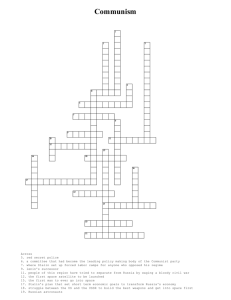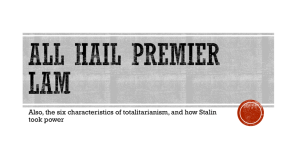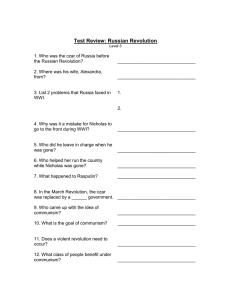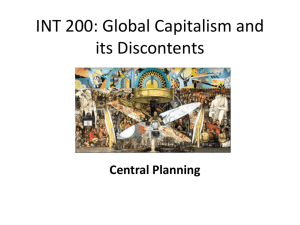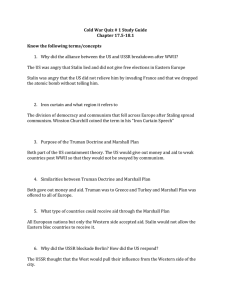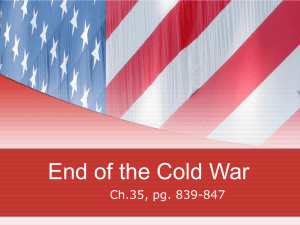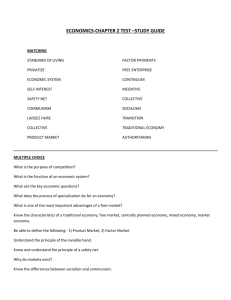Russian Revolution
advertisement
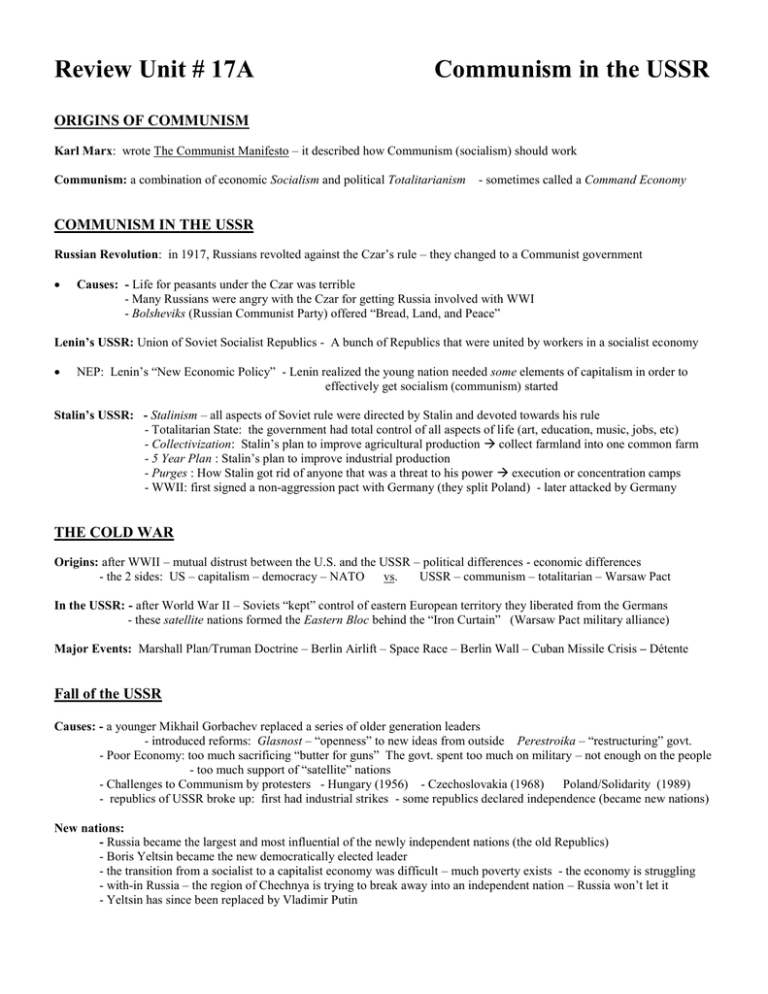
Review Unit # 17A Communism in the USSR ORIGINS OF COMMUNISM Karl Marx: wrote The Communist Manifesto – it described how Communism (socialism) should work Communism: a combination of economic Socialism and political Totalitarianism - sometimes called a Command Economy COMMUNISM IN THE USSR Russian Revolution: in 1917, Russians revolted against the Czar’s rule – they changed to a Communist government Causes: - Life for peasants under the Czar was terrible - Many Russians were angry with the Czar for getting Russia involved with WWI - Bolsheviks (Russian Communist Party) offered “Bread, Land, and Peace” Lenin’s USSR: Union of Soviet Socialist Republics - A bunch of Republics that were united by workers in a socialist economy NEP: Lenin’s “New Economic Policy” - Lenin realized the young nation needed some elements of capitalism in order to effectively get socialism (communism) started Stalin’s USSR: - Stalinism – all aspects of Soviet rule were directed by Stalin and devoted towards his rule - Totalitarian State: the government had total control of all aspects of life (art, education, music, jobs, etc) - Collectivization: Stalin’s plan to improve agricultural production collect farmland into one common farm - 5 Year Plan : Stalin’s plan to improve industrial production - Purges : How Stalin got rid of anyone that was a threat to his power execution or concentration camps - WWII: first signed a non-aggression pact with Germany (they split Poland) - later attacked by Germany THE COLD WAR Origins: after WWII – mutual distrust between the U.S. and the USSR – political differences - economic differences - the 2 sides: US – capitalism – democracy – NATO vs. USSR – communism – totalitarian – Warsaw Pact In the USSR: - after World War II – Soviets “kept” control of eastern European territory they liberated from the Germans - these satellite nations formed the Eastern Bloc behind the “Iron Curtain” (Warsaw Pact military alliance) Major Events: Marshall Plan/Truman Doctrine – Berlin Airlift – Space Race – Berlin Wall – Cuban Missile Crisis – Détente Fall of the USSR Causes: - a younger Mikhail Gorbachev replaced a series of older generation leaders - introduced reforms: Glasnost – “openness” to new ideas from outside Perestroika – “restructuring” govt. - Poor Economy: too much sacrificing “butter for guns” The govt. spent too much on military – not enough on the people - too much support of “satellite” nations - Challenges to Communism by protesters - Hungary (1956) - Czechoslovakia (1968) Poland/Solidarity (1989) - republics of USSR broke up: first had industrial strikes - some republics declared independence (became new nations) New nations: - Russia became the largest and most influential of the newly independent nations (the old Republics) - Boris Yeltsin became the new democratically elected leader - the transition from a socialist to a capitalist economy was difficult – much poverty exists - the economy is struggling - with-in Russia – the region of Chechnya is trying to break away into an independent nation – Russia won’t let it - Yeltsin has since been replaced by Vladimir Putin
